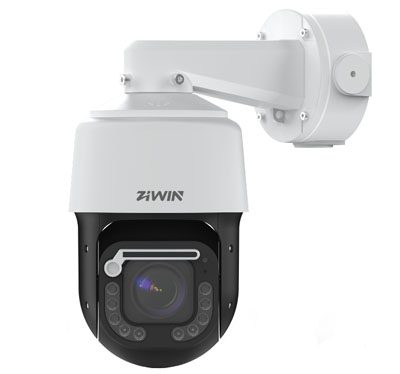
The core technical role of wipers is to ensure the stable operation and image quality of surveillance equipment. Specific functions include:
1. Cleaning the Lens:
Automatically removes impurities such as rainwater, dust, and dirt from the lens, preventing these contaminants from affecting the clarity of the surveillance footage.
2. Improving Image Quality:
In harsh environments such as rain, snow, or sandstorms, wipers ensure the lens remains clean, providing clear and stable surveillance images.
3. Adapting to Complex Environments:
Enables surveillance equipment to operate stably in harsh conditions such as heavy rain, dusty areas, or high pollution, expanding the device's application scenarios.
4. Extending Equipment Lifespan:
Reduces corrosion and wear on the lens caused by dirt, lowers the failure rate of the equipment, and extends the camera's service life.
5. Reducing Maintenance Costs:
The automatic cleaning function reduces the frequency of manual maintenance, lowering the operational costs of the equipment.
From a market sales perspective, wipers are not only a technical feature but also a crucial tool for enhancing product competitiveness and commercial value:
1. Differentiated Competitiveness:
In a market where security surveillance equipment is highly homogeneous, the wiper function can serve as a unique selling point, attracting customers who prioritize equipment stability and environmental adaptability.
2. Meeting High-End Market Demands:
The wiper function is often seen as a high-end feature, elevating the product's positioning and meeting the needs of customers with higher performance requirements, such as those in government, finance, and energy sectors.
3. Enhancing Brand Image:
Equipment equipped with wipers conveys a brand image that pays attention to detail and pursues high quality, boosting customer trust and recognition of the brand.
4. Expanding Application Scenarios:
The wiper function allows the equipment to adapt to more complex environments (e.g., mines, coastal areas, chemical plants), helping sales teams recommend more solutions to customers.
5. Improving Customer Satisfaction:
By reducing monitoring failures caused by lens contamination, the wiper function significantly enhances the customer experience, increasing satisfaction and loyalty.
6. Supporting Marketing Efforts:
The wiper function can be a key focus in product promotion, especially in marketing for outdoor surveillance, showcasing its advantages through practical demonstrations.
7. Adding Product Value:
The wiper function increases the product's added value, giving enterprises an edge in price negotiations and providing integrators and engineers with higher-value solutions.
8. Adapting to Global Market Needs:
In international markets with diverse climates (e.g., rainy tropical regions or dusty Middle Eastern areas), the wiper function significantly enhances product adaptability, helping enterprises expand their global market presence.
The role of wipers in security surveillance PTZ cameras is not limited to technical aspects but also profoundly impacts market sales and brand building:
Technical Value: By ensuring lens cleanliness and image quality, wipers improve equipment performance and reliability, extend lifespan, and reduce maintenance costs.
Market Value: The wiper function enhances product differentiation, meets high-end market demands, elevates brand image, expands application scenarios, and ultimately increases customer satisfaction and market share.
Wipers in security surveillance PTZ cameras are both a technical feature and a powerful tool for market competition. They address customers' practical needs in complex environments and bring additional business opportunities and market advantages to enterprises. By fully leveraging the functional and commercial value of wipers, enterprises can secure a more favorable position in the competitive market and win the favor of more customers.